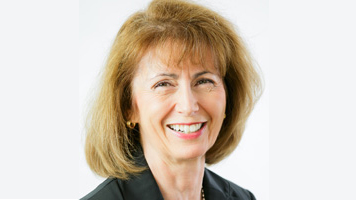Collins | Managing Change (And Finding New Cheese)


Mary Collins
Spencer Johnson, the author of Who Moved my Cheese says, “the quicker you let go of old cheese, the sooner you find new cheese.” For media businesses, the need to let go of old cheese is a constant. The industry exists at the forefront of both cultural and technological change.
Consider some current examples: the advent of ATSC 3.0 and 5G technologies; growth of eSports; implementation of robotics process automation (RPA); programmatic and advanced advertising; and automated credit decisioning, along with a number of acquisitions and divestitures. These examples do not include the numerous regulatory changes that affect the operations of all media businesses.
Senior leadership sets the direction, looking to those further down the company ladder to implement the new vision. When change does not occur as planned, costs include missed revenues, budget overruns, reduced access to resources, and increased resistance to change along with a loss of employee productivity.
Andrew Miller has had varied experience in leading change in his role as an operational and financial performance consultant. In an article he wrote for the March/April 2019 issue of MFM’s member magazine, The Financial Manager (TFM), he explains leaders must look at the organization as a whole and answer the one question that everyone involved in the change will ask: “What’s in it for me.” He says being able to provide thoughtful responses to this question will make the transition smoother.
According to Miller, managers can generally expect to encounter four types of employees; each type will have unique characteristics and responses to change. How they adapt to the new direction is dependent on “where a given employee fits into the bigger picture.” He identifies:
- The Leaders — “Those who want to be at the forefront of any change and help lead and manage it.” Miller estimates that 10% of employees fall into this category.
- The Followers — “Those who always have the best interests of the corporation in mind and will go along with any change because they assume the company is doing it for the right reasons.” About 20% of employees fall into this category.
- The Masses — Employees who go with the flow, regardless of what it is. This 60% neither agrees nor disagrees with the change.
- The Dissenters — This 10% of employees resist change, usually because it is uncomfortable or will disrupt their source of power.
He goes on to explain that different tactics are required for guiding each group through change. Leaders present challenges, but garnering their cooperation will be rewarding. This group wants to be at the forefront and typically sees change as a way to show their unique skills, assume new roles and responsibilities, and solidify their leadership goals. Acknowledging their contributions once a transition has taken place is important to this group. Their expectations are likely to include snagging a plum assignment that reports directly to senior management.
“Followers may be the easiest group to manage,” says Miller. They believe that the company will make the right decisions for the right reasons. Here again, acknowledging their contributions and working to involve them in the company’s new direction goes a long way. Leaders can play a role here, working to cultivate and manage relationships with the followers.
The masses, Miller says, will go along with the leaders and the followers as long there is minimal disruption for them individually. It is still important to help them understand the vision. Communicating with them about the impact of change can be accomplished via group meetings, town halls, and company-wide emails, rather than requiring one-on-one meetings.
Dissenters, as you might imagine, may be the most challenging group to manage through change. However, as Miller points out, managing this group can also be the most satisfying. If handled well, they will become advocates. Despite being small in number, they typically have the loudest voices. Engaging with them and getting their buy in can reap great outcomes. Miller’s recommendation is to meet with the most influential members of this group to learn what the resistance is, where it is coming from, and how to move forward. Keep in mind that any situation that reduces a dissenter’s balance of power within the organization can lead to opposition. At the same time, effectively managed dissenters can become leaders and a manager’s greatest allies.
Who Moved My Cheese’s Johnson says, “things change and are never the same again … life moves on and so should we.” Change is ever-present in business, it can be difficult, and people often resist it. However, as Miller concludes, leaders must learn how their employees perceive change so they can develop an agile workplace culture. You can read his article in its entirety in the current issue of TFM, which will be available on the MFM website for a few more weeks. After that, it will only be accessible in the Members Only area of the site.
Big Ideas In The Big Easy
Disruptor innovations such as ATSC 3.0, 5G, RPA, and advanced advertising, along with changing regulations such as those dealing with sports gambling, and the latest thoughts for media order to cash practices, are all on the agenda for Media Finance Focus 2019.
MFM’s annual conference, featuring more than 80 sessions specifically planned for the media industry’s finance and business professionals, will be held will be held May 20-22 at the Hilton New Orleans Riverside in New Orleans.
Already announced keynote speakers include political strategist James Carville, ethics expert Aaron Beam, and Adrienne Slack from the New Orleans branch of the Federal Reserve Bank of Atlanta. Others will be announced in the coming weeks. Our Big Ideas in the Big Easy will help all attendees identify areas for “new cheese” in their own companies.
Mary M. Collins is president and CEO of the Media Financial Management Association and its BCCA subsidiary, the media industry’s credit association. She can be reached at [email protected] and via the association’s LinkedIn, Twitter or Facebook sites.




































Comments (0)